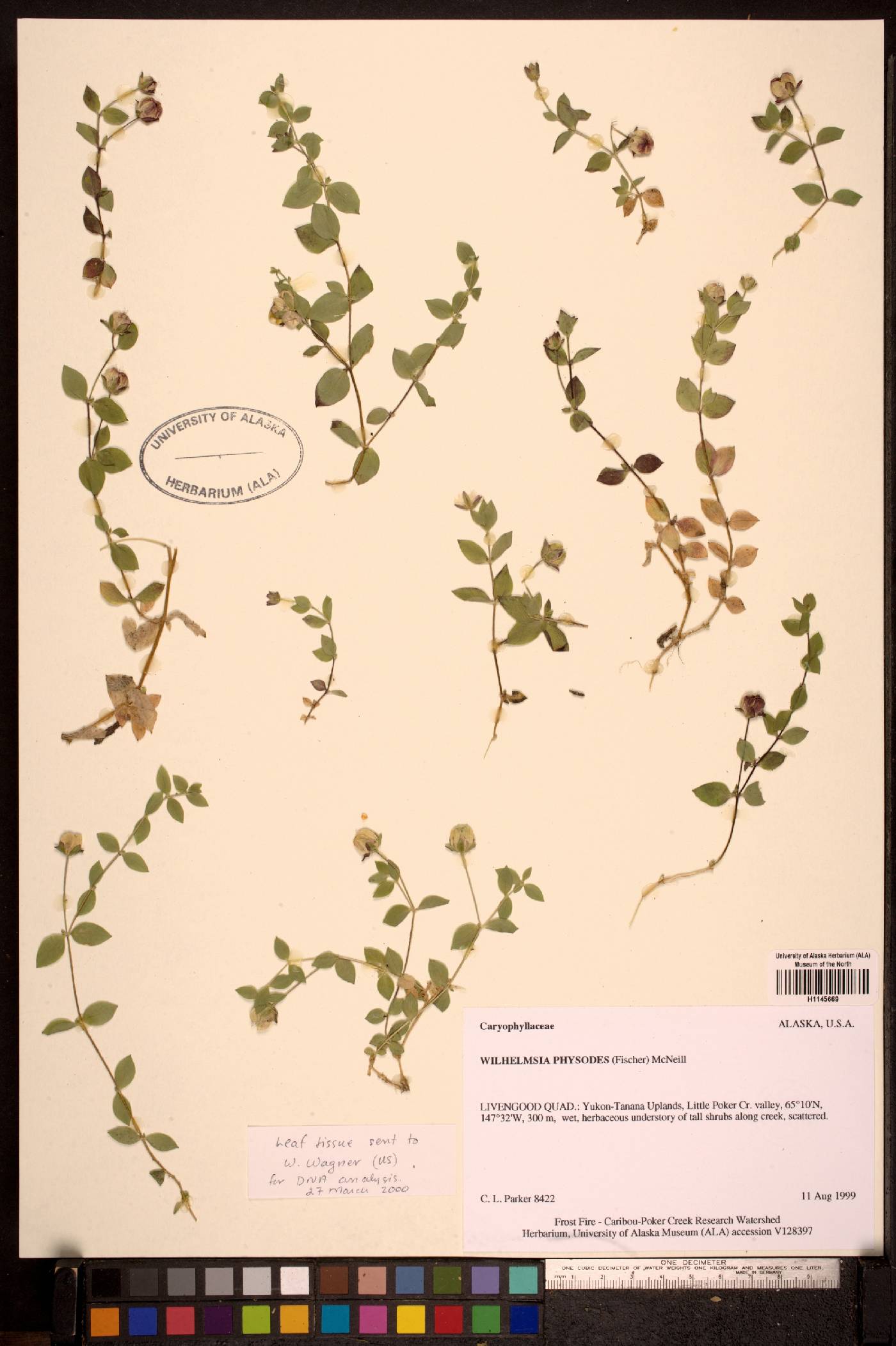|
Family: Caryophyllaceae |
Herbs, perennial; rhizomes somewhat fleshy, often with prominent nodal buds. Taproots usually not evident. Stems prostrate to decumbent, flowering stems erect or ascending, simple or branched, subterete, main stems often rooting at nodes. Leaves not connate proximally, sessile; blade 1-veined, elliptic-obovate to ovate-rhombic or ovate, slightly succulent, apex weakly acuminate. Inflorescences terminal, solitary flowers; bracts absent. Pedicels erect in fruit. Flowers: perianth and androecium weakly perigynous; hypanthium minute, cup-shaped; sepals 5, distinct, green, lanceolate to ovate or elliptic, usually navicular, 2-2.5 mm, herbaceous, margins white to pink or purple, scarious, apex obtuse to acute or short-acuminate, not hooded; petals 5, white, not or narrowly clawed, blade apex entire to weakly emarginate; nectaries as mounds around filaments opposite sepals, swollen on adaxial side; stamens 10, arising from narrow disc; filaments distinct; staminodes absent; ovary 3-locular when young (incompletely 3-celled by inward extension of margins of carpels in fruit); styles 3, narrowly clavate, 2.5-3 mm, glabrous proximally; stigmas 3, subterminal, minutely papillate (30×). Capsules subglobose, inflated, 6-lobed, eventually opening along false septa, sometimes irregularly, into 3, 2-toothed parts; carpophore absent. Seeds 8-16, dark red or brown, subpyriform, laterally compressed, smooth, marginal wing absent, appendage absent. x = 15. |


